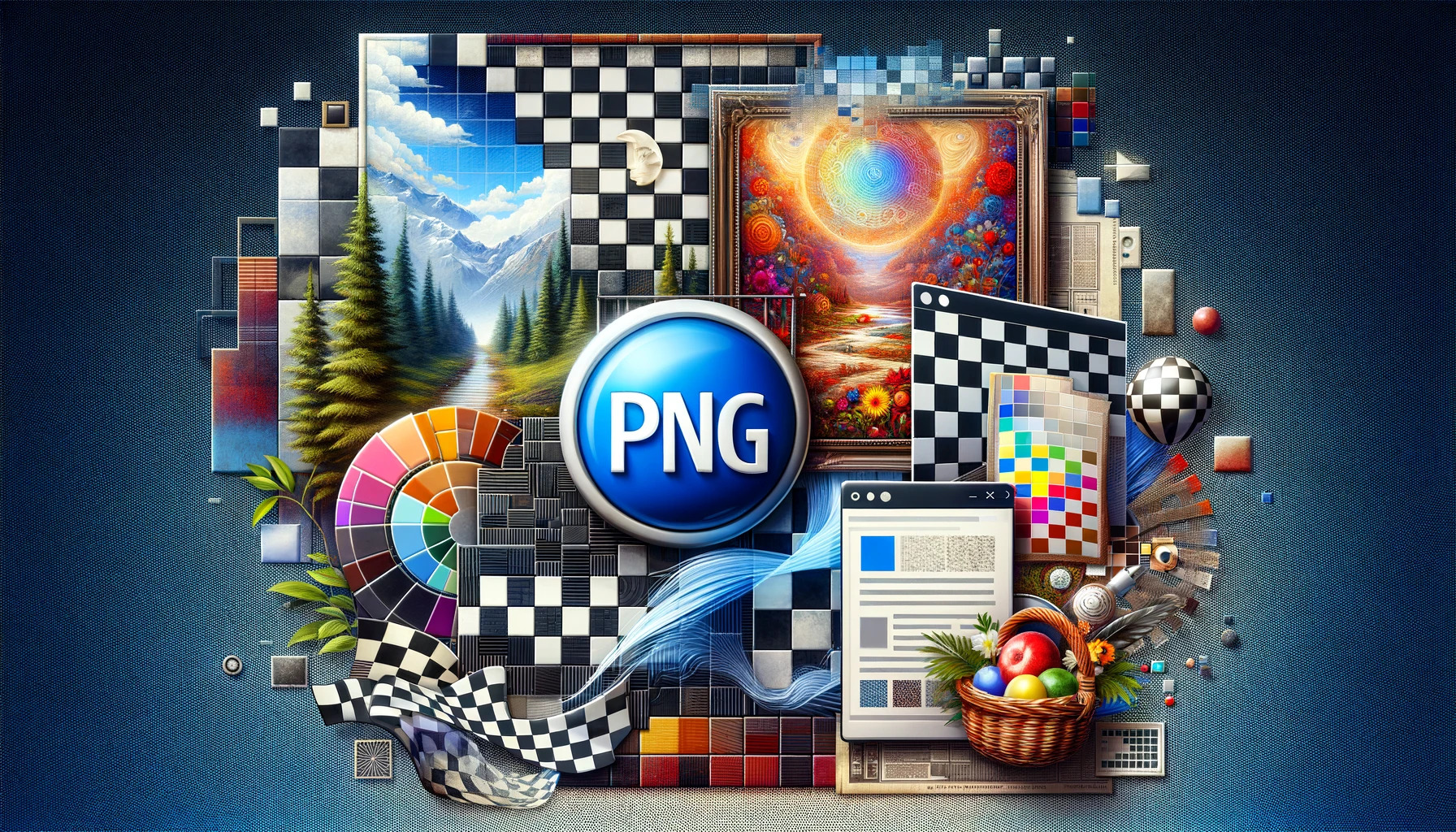Understanding the Limitations of PNG Images
By Tommy
Published March 22, 2024
 Understanding the Limitations of PNG Images
Understanding the Limitations of PNG Images
In the digital age, PNG (Portable Network Graphics) format stands as a beacon of clarity in the vast sea of image formats. Revered for its lossless compression, it has become the go-to choice for anyone seeking to preserve the utmost quality of their digital artworks or images. However, no format is without its flaws, and PNG is no exception. While it boasts remarkable PNG features, understanding its limitations is essential for digital artists, web designers, and the average user alike. This exploration aims to shed light on these limitations, ensuring you make an informed choice when selecting your image format.
1. File Size
One of the most notable limitations of PNG is its file size. PNG uses lossless compression, meaning it retains all the image data after compression. This characteristic, while beneficial for quality, results in larger file sizes compared to PNG vs JPEG, where JPEG employs lossy compression, trading off some image quality for significantly smaller file sizes. Large PNG files can be cumbersome, leading to increased loading times on websites, consuming more storage space, and potentially exceeding email attachment size limits.
2. Lack of Universal Browser Support
Despite its popularity, there are instances where PNG's compatibility falls short. Early versions of web browsers and some mobile browsers may not fully support the PNG technical specifications, leading to display issues or reduced performance. This limitation has become less pronounced over time with advancements in technology and updates to web standards, but it remains a consideration for developers targeting a broad audience, including users on older platforms.
3. No Support for CMYK Color Space
PNG is designed to operate in the RGB color space, making it ideal for screen display. However, this becomes a limitation when dealing with print media. PNG does not support the CMYK color space, which is a staple for print materials. This gap necessitates conversion to other formats that support CMYK, like TIFF or PDF, for print projects, which can be an extra step in the design process.
4. Transparency Challenges
While PNG is celebrated for its ability to handle transparency, this feature can sometimes be a double-edged sword. The complexity of managing transparent PNG files can lead to display issues across different platforms and browsers, especially in scenarios where the transparency or alpha channel is not properly supported or interpreted. This can result in unexpected visual artifacts or rendering problems, particularly in older browser versions.
5. Limited Metadata Storage
Compared to formats like TIFF and JPEG, PNG offers limited support for storing metadata. Metadata includes additional information about the image, such as the creator, copyright information, camera settings, and GPS data. For professionals and enthusiasts who rely on metadata for organizing, searching, or copyright purposes, this limitation of PNG can be a significant drawback.
6. Overkill for Simple Images
When to use PNG is a question of balancing need and practicality. For simple images, such as icons or logos with solid colors, the PNG format can be overkill, leading to unnecessarily large files. Formats like SVG (Scalable Vector Graphics) are often more suited to these types of images, offering smaller file sizes and scalability without loss of quality.
7. Not Ideal for Photographs
For photographs, the PNG format's lossless compression results in file sizes that are much larger than necessary. In the context of PNG vs JPEG, JPEG's lossy compression is typically more than adequate for storing and sharing photographs, striking a better balance between quality and file size. This makes PNG less than ideal for photograph storage, especially when dealing with a large number of images or limited storage space.
8. Performance Considerations
The large file sizes associated with PNG images can have a direct impact on website performance. Websites that use numerous PNG images may experience slower loading times, which can affect user experience and SEO rankings. Developers must carefully consider the trade-off between image quality and performance, often opting for alternative formats or optimization techniques to ensure a balance.
Conclusion
PNG is a robust and versatile image format, celebrated for its lossless compression and support for transparency. However, understanding its limitations is crucial in the digital realm, where efficiency, compatibility, and practicality are key. Whether dealing with web design, digital art, or simply sharing images online, being aware of these limitations allows for informed decisions, ensuring the chosen format meets the needs of the project without unintended complications.
In the vast spectrum of image formats, each has its niche, dictated by the specific requirements of the task at hand. By acknowledging the limitations of PNG, users can navigate the digital landscape more effectively, selecting the most appropriate format for their needs, whether it be PNG for its pristine quality in certain applications or alternatives like JPEG, SVG, or TIFF when circumstances dictate. This nuanced approach to image formatting ensures not only the integrity of digital creations but also their accessibility and practicality across a broad range of applications and platforms.